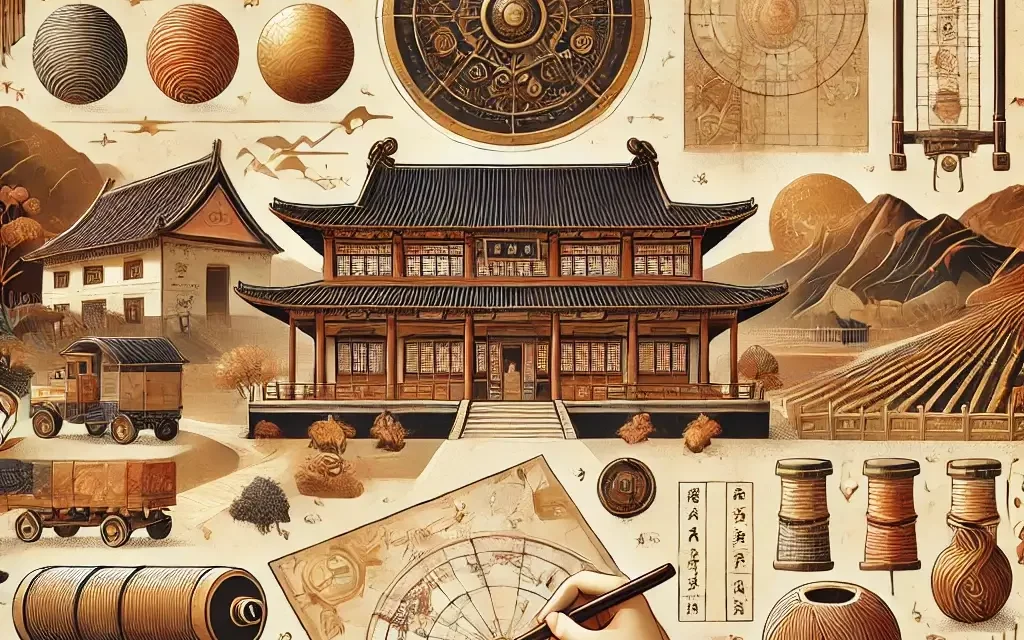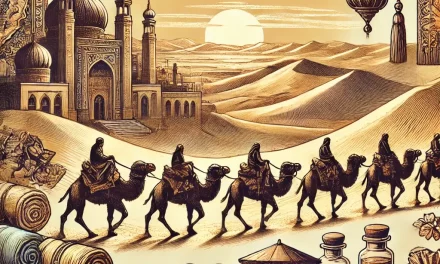The Foundation of the Han Dynasty
Following the collapse of the oppressive Qin Dynasty, the Han rose under the leadership of Emperor Gaozu, or Liu Bang. The dynasty’s emphasis on stability and governance allowed for economic recovery and cultural flourishing.
Innovations in Governance
The Han Dynasty is known for pioneering a centralized bureaucratic system that became a model for future Chinese governments. Key achievements in governance included:
- Civil Service System: The establishment of a merit-based civil service system ensured competent administration and governance.
- Confucianism as State Ideology: Emperor Wu of Han officially adopted Confucianism, promoting ethics and education as central to governance.
Technological and Scientific Achievements
The Han Dynasty contributed significantly to technological and scientific progress. Some of its key innovations include:
- Paper-Making: While earlier forms of writing materials existed, the invention of paper during the Han period revolutionized record-keeping and communication.
- Astronomy: Han astronomers developed star maps and tools for measuring celestial events, aiding both navigation and agricultural planning.
- Seismograph: Zhang Heng, a Han-era scientist, invented the first seismograph, a device to detect earthquakes, showcasing the dynasty’s engineering prowess.
Cultural Flourishing
Art and Literature
- The Han era saw the development of early Chinese poetry, historical texts, and artistic traditions.
- The historian Sima Qian wrote Records of the Grand Historian, a monumental work documenting China’s history from the mythical Yellow Emperor to the Han Dynasty.
Silk and the Silk Road
- This trade network facilitated the spread of Buddhism, advanced cultural exchange, and strengthened the Chinese economy.
Economic Advancements
- Salt and Iron Monopolies: These monopolies bolstered state revenues and funded infrastructure projects.
- Agricultural Tools: Innovations such as the iron plow and horse collar improved farming efficiency, leading to population growth and prosperity.
Military Strength and Expansion
- The Xiongnu Wars: Successful campaigns against the nomadic Xiongnu tribes ensured the safety of the Silk Road.
- Territorial Expansion: The Han expanded into Korea, Vietnam, and Central Asia, establishing a vast and diverse empire.
Medicine and Healthcare
Han medical advancements laid the groundwork for Traditional Chinese Medicine (TCM). Physicians such as Zhang Zhongjing authored seminal texts like Shang Han Lun (Treatise on Cold Damage), which remain influential.
Decline of the Han Dynasty
Despite its achievements, the Han Dynasty eventually declined due to corruption, power struggles, and peasant uprisings like the Yellow Turban Rebellion. The dynasty’s fall marked the beginning of the Three Kingdoms period.
Legacy of the Han Dynasty
The Han Dynasty’s legacy endures in modern China. Even today, the ethnic majority in China refers to themselves as the “Han people,” a testament to the dynasty’s profound influence. Its contributions to governance, technology, culture, and global trade remain benchmarks of human progress.
Conclusion
The Han Dynasty was a transformative era in Chinese history, marked by achievements that shaped not only China but the broader world. By understanding its legacy, we gain insight into the roots of modern civilization and the enduring power of innovation and culture.






Nice article
Hello there, I found your site by the use of Google while looking for a related subject, your site came up, it seems to be great. I have bookmarked it in my google bookmarks.
Thanks for the concepts you have shared here. Furthermore, I believe there are a few factors that really keep your auto insurance premium lower. One is, to take into consideration buying automobiles that are inside the good set of car insurance organizations. Cars that are expensive are definitely more at risk of being snatched. Aside from that insurance coverage is also in accordance with the value of your vehicle, so the more pricey it is, then the higher a premium you only pay.
Hello pals!
I came across a 106 great site that I think you should browse.
This platform is packed with a lot of useful information that you might find valuable.
It has everything you could possibly need, so be sure to give it a visit!
[url=https://freepctech.com/gaming/how-to-become-a-professional-league-of-legends-gamer/https://freepctech.com/gaming/how-to-become-a-professional-league-of-legends-gamer/]https://freepctech.com/gaming/how-to-become-a-professional-league-of-legends-gamer/https://freepctech.com/gaming/how-to-become-a-professional-league-of-legends-gamer/[/url]
Hello !!
I came across a 106 valuable website that I think you should browse.
This resource is packed with a lot of useful information that you might find insightful.
It has everything you could possibly need, so be sure to give it a visit!
[url=https://www.sportsoddshistory.com/nfls-forgotten-rules-rarely-used-regulations-that-could-change-a-game/]https://www.sportsoddshistory.com/nfls-forgotten-rules-rarely-used-regulations-that-could-change-a-game/[/url]
Hello everyone!
I came across a 110 fantastic tool that I think you should dive into.
This platform is packed with a lot of useful information that you might find valuable.
It has everything you could possibly need, so be sure to give it a visit!
[url=https://latestmarketplace.com/gaming-laptops-a-complete-guide-to-choosing-the-best-one/]https://latestmarketplace.com/gaming-laptops-a-complete-guide-to-choosing-the-best-one/[/url]